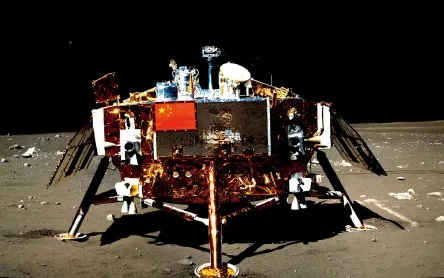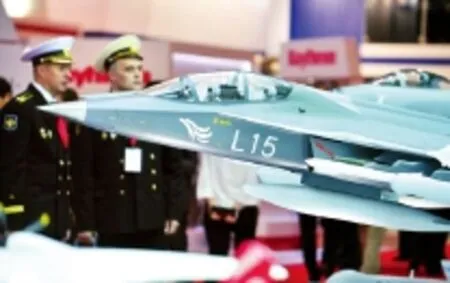BRIEF NEWS
2016-09-26
BRIEF NEWS

Chinese Spring Festival Migration
Chinese passengers made a record number of trips during the Spring Festival (lunar New Year) holiday in early February,according to the data released by the Ministry of Transport of China on Feb 14, 2016. From Feb 7 to 13, passenger trips reached 400 million, up 6.7 percent from 2015. Over 47 million trips were made by rail, 333 million on road and about 8.5 million by air.
During this year's lunar New Year travel rush, which lasts from Jan 24 to March 3,the Chinese are expected to make 2.91 billion passenger trips across the country, the world's largest annual human migration for family reunions and tourism purpose.
The data also showed about 80 percent of trips was for family reunion, 10 percent for tourism, and 17.7 percent were overseas trips. Japan, Thailand,Taiwan, South Korea, Australia,Vietnam, Singapore, Indonesia,Hong Kong and the Philippines are the top 10 outbound tourism destinations, according to the National Tourism Administration.
Supply-Side Reform:Chinese Agriculture in 2016
The annual No. 1 Central Document released on Jan 27, 2016 by the CPC Central Committee and the State Council has made supply-side reform the main focus of China's agricultural development of 2016.
According to the document,"quickly providing farmers with higher and more stable income, urgently transforming the traditional agricultural development path to provide an ample supply of agricultural products and improving the sector's competiveness in the international market have become historic tasks and realistic challenges that must be completed and resolved".
China's agricultural sector is facing a problem of overcapacity, the supply of certain products is far beyond the actual demand. The government plans to channel more money to rural areas, and encourage private investment into agriculture projects. The reform aims to ensure that farmers benefit from agricultural development.
China's Defense and Military Reform Continues
On Feb 1, 2016, China took another major step in its defense and military reform. At a ceremony in Beijing, President Xi Jinping conferred military flags to the five newly-established theater commands of the People's Liberation Army (PLA):the Eastern Theater Command,the Southern Theater Command,the Western Theater Command,the Northern Theater Command and the Central Theater Command. The five new theater commands replace the previous seven regional commands named after the cities where their headquarters were located - Beijing, Shenyang, Ji'nan,Lanzhou, Nanjing, Chengdu and Guangzhou.
In his speech at the ceremony, President Xi said the move to establish the theater commands and form the joint battle command system is a strategic decision by the Communist Party of China(CPC) Central Committee and the Central Military Commission(CMC) to realize the Chinese dream of a strong military. It is also a landmark progress in implementing the military reforms and building the PLA's joint battle system.
At a press conference held that evening, Ministry of National Defense spokesman Yang Yujun commented that China's military reform is aimed at establishing a three-tier command system(the CMC - theater commands - troops) and an administration system that goes from the CMC through various services to the troops. The reorganization of China's military administration structure and command system will not affect the country's defense policy, which is "defensive in nature."
China's White Paper on Nuclear Emergency
China's State Council Information Office published the first nuclear white paper of China on Jan 27, 2016, detailing policies and measures to boost nuclear emergency preparedness and highlighting "a rational,coordinated and balanced" nuclear security approach.
"China has consistently given top priority to nuclear safety in its peaceful use of nuclear energy," said the white paper. "None of the nuclear power generating units in the Chinese mainland has suffered events or accidents rated above Level 2 under the International Nuclear and Radiological Event Scale (INES) with the release of gaseous and liquid effluents kept far below the national regulatory limits."
As of the end of October 2015, the Chinese mainland had 27 nuclear power generating units in operation, with a total installed capacity of 25.5 gigawatts (GW),while another 25 units with a total installed capacity of 27.51 GW had been under construction. China plans to raise its installed nuclear power capacity to 58 GW with an additional 30 GW under construction by 2020.
According to the report,China's nuclear emergency rescue network is "of a proper scale, well-coordinated and of a rational layout", adding that there is also a plan to establish a new top-level national nuclear emergency rescue team of about 300 members to respond to serious nuclear accidents and international rescue operations.

Chinese Special Envoy Visits Laos and Vietnam
Xi Jinping, General Secretary of the Central Committee of the Communist Party of China (CPC), sent his special envoy Song Tao, Head of the International Department of the CPC Central Committee, to visit Laos and Vietnam on Jan 27-30,2016, following the conclusion of the 10th National Congress of the Lao ruling People's Revolutionary Party (LPRP)and First Plenary Session of the 12th Central Committee of Communist Party of the Vietnam(CPV).
In Laos, the Chinese special envoy called on Lao President Choummaly Sayasone. Song conveyed Xi's greetings and best wishes to Choummaly, and said the Chinese side is ready to work with Laos to deepen the comprehensive strategic cooperative partnership between the two countries. Choummaly said his country is willing to promote the further development of relations with China.
In Vietnam, Song Tao called on Vietnamese Party Chief Nguyen Phu Trong. Song extended Xi's congratulations to Trong on his re-election as general secretary of the 12th Central Committee of the Communist Party of Vietnam(CPV), and conveyed Xi's message that China is ready to work together with Vietnam to develop their comprehensive strategic cooperative partnership in a sustained, stable and healthy manner.
Trong, for his part, said the Vietnam side is willing to consolidate and develop the traditional friendship with China.

China's Chang'e-4 Probe to Land on Dark Side of Moon
China has officially begun a new round of lunar exploration and will send the Chang'e-4 probe to the far side of the moon in 2018, China's State Administration of Science, Technology and Industry for National Defense(SASTIND) announced at the end of 2015.
The far side of the moon is never visible to Earth because of gravitational forces and has never been explored by humans. Chang'e-4 will be the first mission in human history to embark on this expedition, said Liu Jizhong,chief of the lunar exploration center under SASTIND.
Liu said China achieved its first soft-landing on the moon with Chang'e-3 in December 2013,which is still sending messages back to Earth. Chang'e-4 is similar to Chang'e-3 in structure but can handle more payload. It will be used to study the geological conditions of the dark side of the moon. China also plans to launch its Chang'e-5 lunar probe to finish the last chapter in China's threestep (orbiting, landing and return)moon exploration program.
ASEAN Remains Top Trading Partner for Guangxi
ASEAN remained the biggest trading partner for south China's Guangxi Zhuang Autonomous Region over the past five years,authorities said Feb 1, 2016.
As a gateway for cooperation between China and ASEAN,Guangxi's total imports and exports to ASEAN economies grew to 568 billion yuan ($92billion) from 2011 to 2015,accounting for almost half of the region's total foreign trade,according to Nanning Customs.

Singapore Hosts 2016 Airshow
The Singapore Airshow,Asia's largest and one of the most important aerospace and defense exhibitions in the world,kicked off at Singapore's Changi Exhibition Center on Feb 16, 2016. Singapore's Coordinating Minister for Infrastructure Khaw Boon Wan and Defense Minister Ng Eng Hen attended the opening ceremony.
This year's event saw the participation of an impressive list of top global aerospace and defense companies. About 75 percent of the more than 1,000 participating companies from some 50 countries are returning exhibitors, including 65 of the top 100 global aerospace companies.
Booming Investment in China's Mobile Internet Industries
The mobile internet industry in China was showered with billions of dollars in 2015 as investors continued to favor the sector in the country's economic transformation, an investment study released in late January 2016 by the China Venture Group,Chinese mobile internet start-ups received investment worth $4.5 billion in 2015, up 69.4 percent from the previous year.
The study said venture capital and private equity funds put money in 479 investments,of which 338 cases were for companies in early growth. Kuaidi,a car-ride hailing service app,topped mobile internet companies in funding, receiving $600 million in 2015.

Shanghai Disney Resort to Open in June
The Shanghai Disney Resort will officially open and welcome its first guests on June 16, 2016,according to the Walt Disney Company and the Shanghai Shendi Group.
Construction of the resort,the sixth of its kind worldwide,started in 2011 with an investment of 34 billion yuan ($5.5 billion). China Opens Bond Market to Individual Investors
China's central bank, the People's Bank of China (PBOC)issued a regulation allowing individual investors to purchase all types of bonds over bank counters on Feb 14, 2016.
According to the regulation,individuals with annual income of more than 500,000 yuan($76,500), 3 million yuan($456,600) of financial assets and over two years of securities investment experience can now buy any bonds they like over the counter. Previously, only certificate treasury bonds were available to individuals.
China's bond market boomed in 2015 thanks to government moves to diversify corporate financing channels.
Cross-Border E-commerce Booms in China
American lobsters, New Zealand fruits, Australian steaks,South Korean cosmetics and Russian crabs. A simple click of the mouse allows Chinese internet users to buy almost anything in the world thanks to the rapid growth of cross-border e-commerce,according to a Guangzhou Daily report. Purchasing overseas products online has become an increasingly popular way to prepare for the Spring Festival in the southern city of Guangzhou.
According to the Ministry of Commerce of China, 2015 online retail sales amounted to 3.88 trillion yuan ($589 billion) nationally.
The rapid e-commerce growth is underpinned by China's ever-expanding population of online shoppers. By December 2015, over 60 percent of the country's internet users made online purchases, according to the China Internet Network Information Center.
Sources:
Xinhua News Agency,China News Service,China Daily
